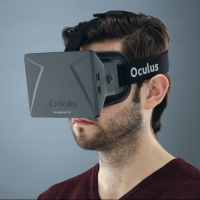The Virtual Reality Wave Is Coming: How It Could Change Your Life

Technology operates in a very dynamic landscape. New products and applications based on technological advancements flood the market by the day. Obviously, not all of them have the same level of success on release. Device and app makers take a gamble on what trends will pay off and what will change the user’s experience in a positive way.
Along these lines, the next big wave seems to be in the spaces of augmented and virtual realities. These two terms are often misunderstood in the industry. Augmented reality, as the name suggests, augments or enhances reality—for instance, the user can see a far-off object up close and is able to zoom it in and out or add varied dimensions to it. On the other hand, virtual reality simulates a physical presence, sometimes even creating virtual sensory experiences such as taste, smell, or touch.
The market for both these up-and-coming technologies appears to be very promising, with several large and small players working on their offerings. HTC, Samsung, Sony, and Microsoft are all busy working on building virtual reality devices, while app makers are thinking about innovations that can define this market.
Interaction is the biggest positive experience virtual reality is hoping to bring about. Although communication technologies have largely brought down travel costs, in the enterprise world, virtual reality is expected to further cut these expenses drastically and enhance the overall interaction experience in unimaginable ways.
Experts are optimistic to see this market shape up in the coming year or two and take off from there. Right now, the market for virtual reality is quite collaborative. Because this is a very complex and less-researched ground, players are openly discussing challenges and solutions.
The space definitely has a number of open downsides to address. One of the biggest is the impact virtual reality could potentially have on the human brain. App makers are equally concerned about developers who are working on these applications and the impact it could have on them all along the development lifecycle. There also could be other serious implications related to public safety in the market adoption of virtual reality. Let’s say a criminal case is under investigation. What if reality is manipulated to make convicts appear or not appear at a certain crime scene?
While these new technologies often sound very cool and are compelling to embrace, the road taken in their journey is quite challenging in most cases. At CES this year people experienced virtual reality in varied shapes and forms, but it doesn’t seem like the technology will be perfected any time soon. Virtual reality will fall in the category of having to take the road less traveled in its path to market adoption, but nonetheless, the movement is gaining in popularity.

